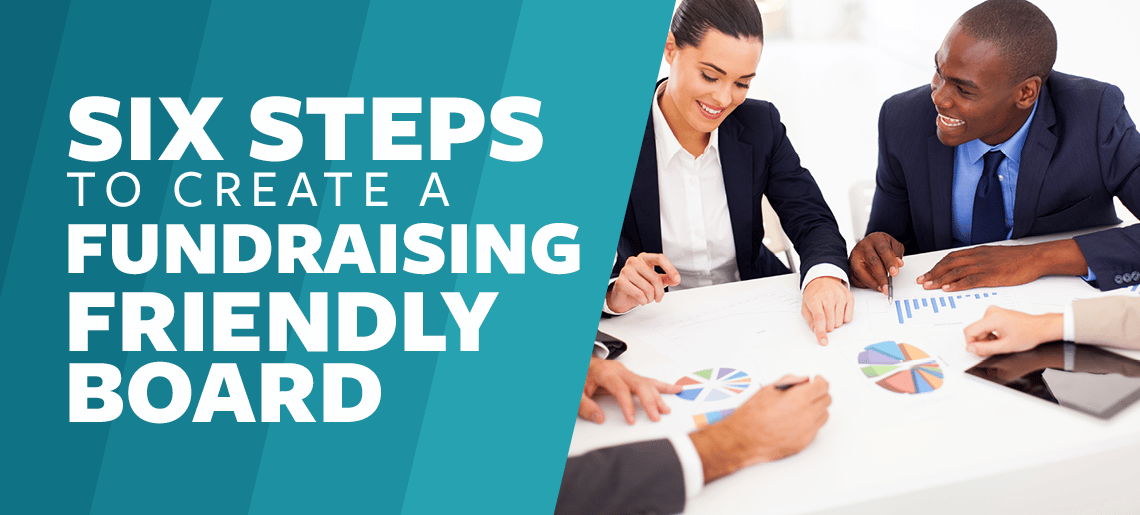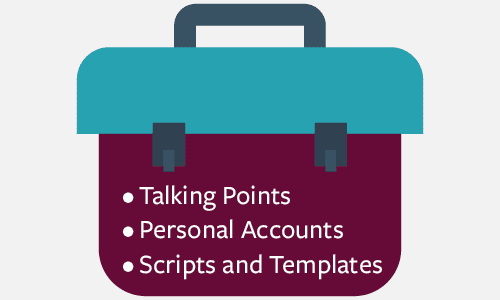
It’s no secret that most Board members rank fundraising as their least favorite activity. In studies both by BoardSource and Penelope Burk’s Cygnus Applied Research, Boards and CEOs rated nonprofit board fundraising performance abysmally. BoardSource asked CEOs to grade their organizations’ Board of Directors performance in the ten basic board responsibilities and gave only 5% an A with 65% of respondents getting either a C or D.
Then we have the well-read UnderDeveloped report that cited 30% of Development professionals who said they were planning to resign cited problems between them and their Boards as the key reason for their departure.
Board members hold an invaluable role in an organization’s fundraising efforts. Aside from their governing and fiduciary responsibility to their nonprofit to ensure accountability and programmatic results, their support (whether in time or dollars) affects donor behavior and determines a development team’s job satisfaction and likelihood for success.
Simply put, a board can make or break a nonprofit’s fundraising program. Yet, research shows most boards need work. Houston, we have a problem.
The reason why board members often feel frustrated by and uncomfortable with fundraising can be broken down into six areas:
-
How board expectations are set (or not)
-
Who’s recruited to serve on a board
-
How we train board members for fundraising success
-
Tools and resources that equip them for success
-
Ways we can counter fundraising myths
-
Regularly measuring progress
Here are tips you can use to create a nonprofit board engagement plan that sets them up for success.

Before you start recruiting new board members, it’s essential that you answer this question: What do you want the board to do for your organization? Take the time to develop a job description that outlines exactly what you expect from board members in terms of time commitment (number of meetings during the year and length of term), meeting and event attendance, levels of involvement, and fundraising activities.
Vague statements like “play an active role in fundraising” leave expectations up to the imagination and will not likely be the fundraising support you need. In your job description, specify the level of gift you want board members to make as well as the type of fundraising activities you would like them to do. The point is to be as clear as possible when describing the fundraising role you need your board members to play.

Now that you know what you want your board members to do, visualize your organization’s ideal board. How does your organization’s current board align with that vision? Conduct an analysis looking at the skills and representation (geographic, gender, and other demographics) currently on your board. Then, ask yourself :
-
What skills and expertise do your board members need to guide your organization over the next few years?
-
How does the board perform now with fundraising?
-
Do its members make philanthropy a priority?
-
What kind of board member will offer better access to potential major individual and institutional donors?
The next step is finding your ideal board members. Start with your current board members and their networks. Next, look at your donor base and identify a few major donors or prospects who could be good candidates or can introduce you to one. Finally, you may want to post a call for board members on LinkedIn to reach outside your traditional connections.

Once you’ve outlined the job board members can do, you need to train them. Hosting an in-person orientation for new board members is essential for both you and them. After all, they need to understand your organization inside and out in order to be most effective. The ideal orientation has two key parts:
-
Organizational overview
This outlines your organization’s mission, vision, strategic plan, programs, and finances. Encourage new board members to visit your offices to see your work in action and to meet your program leaders. These experiences help them become more effective advocates (and fundraisers) for your organization.
-
Fundraising overview
Show your board fundraising trends, donor giving metrics, and best practices to help demystify how fundraising actually works. Provide the summary of your annual fundraising development plan to show all the strategies for fundraising that year. This is also the perfect opportunity to discuss the many roles they can play in creating strong donor engagement.
Create a menu of ways volunteer leadership can play a role engaging, soliciting, and thanking donors. Ask them to commit to a few activities that they can implement that fiscal year.
If nothing else, your Board members play a critical role in stewarding donors.
According to Penelope Burk in her book, Donor-Centered Fundraising, if a donor received a thank you call from a Board member within days of making a gift,
-
93% of respondents said that they would “definitely or probably give again the next time they were asked,”
-
84% said they would “make a larger gift,”
-
74% would “continue giving indefinitely.”
After the orientation, meet 1:1 with each new board member to define the specific role they can play and the level of support they will need from staff to fulfill their role most effectively.
This nonprofit fundraising orientation isn’t just for new board members. At the beginning of each new fiscal year, either at a board retreat or built into the first meeting of the fiscal year, provide a refresher orientation for all board members to really understand your work and how to ask for support.

While your board members are all talented and successful, they are also very busy. This is why creating a toolkit of talking points and templates can make their job even easier. Here are a few turnkey tools your board members will appreciate:

-
Talking points and an “elevator pitch”
This helps board members to easily learn the topline points about your nonprofit and ensures that everyone is literally speaking from the same hymn sheet. Test these talking points at a board meeting to see how comfortable everyone is using them and if there are ways you can refine them further.
-
Story bank of personal accounts of the impact of your organization’s work
We are hard-wired for stories and there’s no better way to convey impact than through profiles of people your nonprofit has helped. In addition to providing stories of impact you collect, ask board members to include their own stories. Their personal testimony is powerful.
-
Scripts and Email Templates
Since we’ve seen that board thank you calls are especially powerful, make it as easy as possible for them by providing a script that they can adapt for their own voice. Also include a draft email template that they can copy and paste for donor outreach.

So often, board members believe that soliciting gifts is the only way to fundraise. There are also other myths they bring with them into their board role. We know that nonprofit fundraising is really about building donor relationships not just writing checks.
Your nonprofit board engagement plan can also address a few other misperceptions you may encounter, such as:
-
“I can’t ask for money.”
Explain the donor relationship cycle and the different roles board members can play in fundraising. Some board leaders may cultivate connections and introduce new people to an organization. Others may connect their networks and bring other donors to you. A few will enjoy asking potential and current donors to invest in your work. All board members can and should be donors and stewards of your donors. Board “thank you” calls, for example, have an incredible effect on donor retention.
-
“I Don’t Know What to Say.”
We assume that board leaders are the real “insiders” of an organization. But they still need help talking about your organization and how donors’ support helps create greater results. That’s where the board orientation, talking points, and other templates you create for them are incredibly important. Role playing can also build confidence and help them practice what to say.
-
“I Don’t Know Any “Rich” People.”
That’s ok. This isn’t just about megagifts. This is about building and keeping your donor base. You need their help identifying others whom they know who believe in your mission and may become a donor over time. Counter this myth with conversations about who they know who may be most interested in your mission and set a goal to recruit a certain number of new donors to a giving society your organization may have.
Also, an even more important role they can play is in thanking donors. If they feel like they can’t add to your donor lists, they can (and should) be helping to steward and retain the supporters you have.

After you’ve recruited your dream board and agreed on ways they can be involved in fundraising, assist them in keeping on track to be successful. This is not their full-time job and they want to be helpful to you. As Peter Drucker, the great management guru, once said, “What gets measured gets improved.”
-
Quarterly check-ins
Use the fundraising menu as a guide to help board members keep track of the activities they committed to doing this year. Share with them personal quarterly reports and use those 1:1 check-ins to solidify timeframes and support they may need.
-
Board self-evaluation
Each year, a self-evaluation helps the board reflect on their collective and individual performance and helps staff identify where their volunteer leaders may need more support or direction. Encourage your governance committee to have each board member complete a personal self-evaluation. Review the results as a group and ask your governance committee to come up with recommendations to address issues or gaps the evaluation identifies.
Managing a board to succeed in fundraising is comprehensive and ongoing. Your nonprofit board engagement plan that leads to success clearly states the expectations, tools, and ongoing guidance that will help them feel more confident in building donor relationships.
